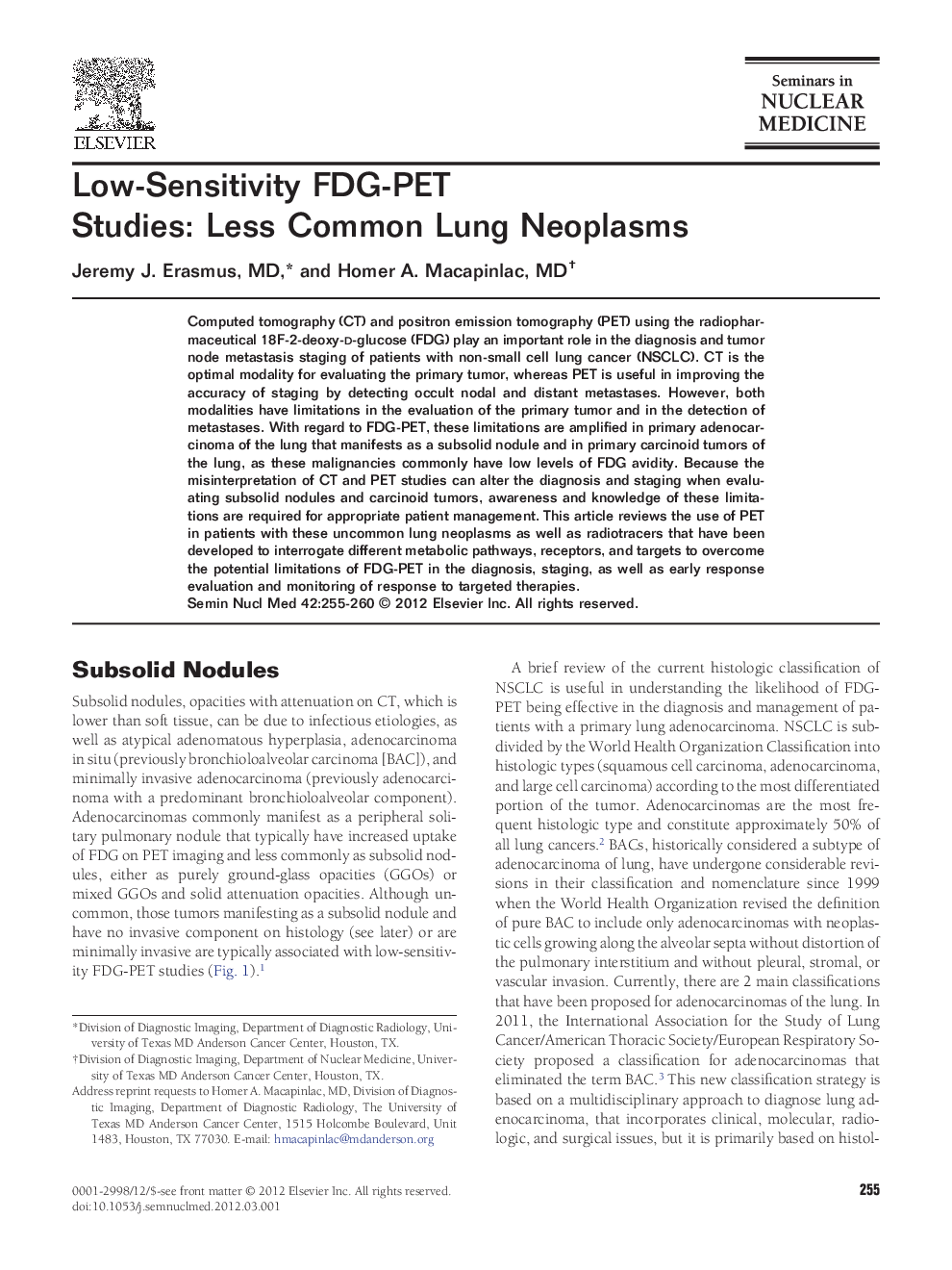| Article ID | Journal | Published Year | Pages | File Type |
|---|---|---|---|---|
| 4250997 | Seminars in Nuclear Medicine | 2012 | 6 Pages |
Abstract
Computed tomography (CT) and positron emission tomography (PET) using the radiopharmaceutical 18F-2-deoxy-d-glucose (FDG) play an important role in the diagnosis and tumor node metastasis staging of patients with non-small cell lung cancer (NSCLC). CT is the optimal modality for evaluating the primary tumor, whereas PET is useful in improving the accuracy of staging by detecting occult nodal and distant metastases. However, both modalities have limitations in the evaluation of the primary tumor and in the detection of metastases. With regard to FDG-PET, these limitations are amplified in primary adenocarcinoma of the lung that manifests as a subsolid nodule and in primary carcinoid tumors of the lung, as these malignancies commonly have low levels of FDG avidity. Because the misinterpretation of CT and PET studies can alter the diagnosis and staging when evaluating subsolid nodules and carcinoid tumors, awareness and knowledge of these limitations are required for appropriate patient management. This article reviews the use of PET in patients with these uncommon lung neoplasms as well as radiotracers that have been developed to interrogate different metabolic pathways, receptors, and targets to overcome the potential limitations of FDG-PET in the diagnosis, staging, as well as early response evaluation and monitoring of response to targeted therapies.
Related Topics
Health Sciences
Medicine and Dentistry
Radiology and Imaging
Authors
Jeremy J. MD, Homer A. MD,
